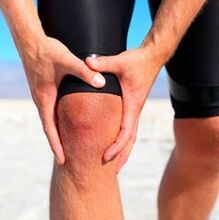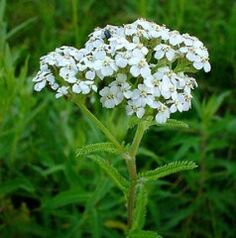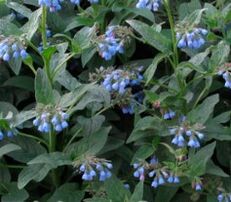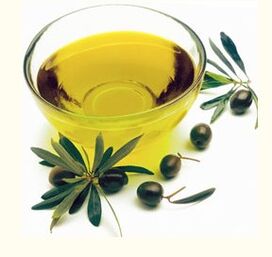Negative changes and destruction processes in the knee cartilage are called arthrosis of the knee joint. This disease is chronic and causes symptoms of pain. Most often it develops during the age of the knee arthrosis, in a young age, and there is usually a post -traumatic appearance. The disease is also called gonarthrosis and its folk name is "depositing salts".
Signs
Gonarthrosis is the destruction of cartilage tissue due to poor blood circulation of the bones. As a result, deforming arthrosis caused by bone growth may develop.
Usually the first symptoms of arthrosis are almost unnoticed. Weak pain does not cause much discomfort and does not restrict movements. You can go for several years until it gets worse. Symptoms of pain may increase slightly after workout or legs.
As the disease progresses, new symptoms occur and the old ones improve. The pain appears in this way and does not pass even for a long time. Long walks or lifting weights react with pain in the knees.
Such symptoms occur after stage 2 of the arthrosis of the knee joint:
- Synovitis - the joint fluid accumulates into the joint. Surplus can provoke dense formation on the back wall of the joint cavity. This phenomenon is called Baker cyst and can be cured without surgery.
- Deformation of the knee. At first, it swells slightly, with grade 2 and 3 the shape of the knee.
- Crunch. It appears in sections 2 and 3 of the disease. With sharp crunch, the symptoms of pain are clearly felt.
- Limited mobility. This is typical of the second and 3 degrees of arthrosis if you can only bend the leg at right angles. In a neglected form, the knee can be completely motionless and the joints in it are very deformed.
- Mete sensitivity. Painful pain in changing weather conditions.
Symptoms and intensity may vary significantly depending on the stage of the disease:
- In the first stage, the pain occurs after active physical effort. Initial arthrosis damage the cartilage but does not deform the joints. Diagnosis of the disease is difficult.
- In the second stage, the joint gap narrowed, the damaged cartilage tissue is clearly visible in the X -Srays. The movement of the knee causes acute pain when it occurs during bending, a crunching appearance. The joints are worse, and their deformation can be noticed by naked appearance.
- At the third stage, the naked areas of the bone "permeate" through thinner cartilage tissue. The salt is placed in the joint cavity. The pain persists even during rest.
Types of illness
The arthrosis of the knee has several types. According to origin:
- Primary. This type of arthrosis of the knee joint does not depend on other diseases. Elderly people, women and excessive weight are in danger.
- Secondary. The disease occurs after injury or infectious disease. It can be avoided by treating the injury or inflammation of the knee joint in time.
Place by place:
- Bilateral. Both knees are affected. The disease becomes age, lighter and threatens more severely disability. Bilateral arthrosis is most often primary.
- Better -out. The disease attacks your right knee, most often in athletes and people who regularly charge on the right leg.
- Left. The left knee suffers and the disease lies in the athletes of the elderly and the entire people.
The knee deforming arthrosis is a disease that is greater, whole women. This is provoked by a strong deposition of salts. In the early stages of deformation, the inner side of the joints are exposed to the late - external part. Deformation of gonarthrosis should be started as early as possible so that the cartilage in the above area remains normal- The main symptoms are acute pain and crunch.
Patellofemoral syndrome
Very often it was preceded by knee joint syndrome. In medical literature and practice, it is often called arthrosis of the same name. This is the lesion of cartilage tissue in the patella. Patellofemoral syndrome accompanies the following symptoms:
- Pain in the joint, enhancing prolonged bending, leaps, running, walking or squatting on the stairs.
- Limited mobility of the knee.
- Crystal and "click" in the joints.
- Station in the joints.
Patellofemoral syndrome is usually manifested in people whose activities or lifestyles are related to heavy loads - athletes, fat people. In addition, this type of arthrosis accompanies the elderly. Often, patellofemoral arthosis is a result of severe knee damage.
When diagnosed with syndrome, it is important to provide the rest of the sore leg immediately. Occasionally, in order to remove the load from the knee, your doctor may recommend orthosis or tight bandage. All people have to lose weight slightly. At home, you can make refrigerations to relieve pain.
Patellofemoral syndrome develops gradually:
- In the first stage, the pain only appears after very severe loads, often felt the tiredness of the knee.
- Pain and discomfort 2 are improved more often, and joints are limited. Symptoms occur after rest.
- A significant restriction of movements in constant pain.
Patallofmoral syndrome should be treated comprehensively and does not only relieve pain. Treatment should include the reception of medicines, the introduction of chondroprotectors, and physiotherapy. Diet and physiotherapeutic exercises will not be unnecessary.
Post -trauma arthrosis
Post -traumatic arthrosis is a type of disease that is most often found in a young age. After injury to the knee, the limb is fixed and blood circulation deteriorates. This negatively affects cartilage tissue and provokes the formation of arthrosis. Occasionally, post -traumatic arthrosis can develop after the joint surgical operation. The scars of the tissues may interfere with the blood supply to the knee.
The post -traumatic type of this disease is chronic, so the purpose of the treatment is to ensure that arthrosis is no longer progressing. It is almost impossible to heal post -traumatic arthrosis alone at home. You should receive painkillers, chondroprotectors and antispamodes, physiotherapy exercises, massage and hardware procedures. In advanced cases, surgical intervention may be required.
Hemarthrosis
Hemarthrosis is a separate type of knee arthrosis that occurs due to injury or blood coagulation problems. Hemartrosis can be caused by such factors:
- bruising or fracture of the knee joint and patella;
- Traumatic damage to meniscus and cartilage;
- Cracks of leagues or synovial membrane;
- fracture of the femur or large Swiss caps;
- hemorrhage;
- Tumors of different origins;
- some neurological and infectious diseases;
- Prolonged intake of anticoagulants;
- osteoarthritis;
- surgical intervention;
- Problems of blood vessels.Hemartrosis is characterized by blood flow to the joint cavity. Blood is extremely negatively affecting the state of normal cartilage. Hemartrosis is determined by such symptoms:
- The knee swollen or greatly changes its shape;
- Pressing under the fingers, the flood is felt;
- The temperature rises in the damaged location;
- Stone and blue soft tissues.
An accurate diagnosis of hemarthrosis may be after a joint punch. In addition to analyzing the joint fluid, CT and MRI can be prepared.
Hemarthrosis should be treated simultaneously to prevent complications. You can start treatment at home with minor injuries. Simple first aid methods help minimize the consequences of bleeding in the joint:
- Provide a damaged knee with peace;
- Lift your leg and repair;
- Make a cold compression;
- Take anesthesia.
This series of action even relieves the symptoms of pain at home and slightly helps hemartrosis, and in difficult cases you need to seek medical attention.
Folk medicines
Treatment of gonarthrosis with folk drugs should be agreed with the doctor. We recommend combining folk medicines with official medicine methods. At home, folk drugs help Hemarthrosis effectively treat slightly or relieve the patient's condition with complications. We recommend that you compress with horseradish:
- Peel and grate a small piece of horseradish.
- With highly sensitive skin, the rhizome is replaced by plant leaves.
- Keep the mass in a water bath for a few minutes.
- Put on the root on the gauze and make a thickening.
- The procedure duration is two hours.
In the case of traumatic hemarthrosis, the ointment cannot be used in the first two days after injury.
You should contact the traumatologist with serious injury and abundant or prolonged bleeding in the joint. Folk treatment methods in this situation are secondary. Hemartrosis should be treated with a blood -based diet in the hospital, but you can use anti -inflammatory and hemostatic drugs at home. Based on such herbs, the infusion will be useful:

- Ficka;
- oregano;
- nettle.
Do it this way:
- Grinding of plant raw materials.
- Mix herbs in equal parts.
- Three tablespoons of the collection pour 600 ml of boiling water.
- Stick within 1 to 1, 5 hours.
The warm filtered infusion should be taken three times a day at 50 ml.
Gelatin
At home, you can try to handle deforming arthrosis with gelatin. It contains large amounts of collagen, which improves cartilage tissue and increases the production of Internourgin lubrication. D Geikin treatment should be combined with the intake of vitamin C vitamin C complex.
The healing mixture with gelatin is made according to this recipe:
- Pour a teaspoon of gelatin 50 ml of cold water.
- Leave the mixture for 12 hours.
- Add water in 150 ml of boiling water.
- After mixing, add a teaspoon of honey.
A glass of this drink with gelatin drink on an empty stomach for 10 days. Then you need a week break. The course is repeated twice.
Ointment and eyes
The following components will be required to make an effective ointment house:
- turpentine - 150 ml;
- Vodka - 150 ml;
- Olive oil - 150 ml;
- Camphor - 3 grams.
All components of the ointment should be mixed and applied to the sore site twice daily.
At home, deforming arthrosis can be treated with radish -based ointment. The following ingredients will be required:
- Black radishes;
- Linden Honey - 150 grams;
- Vodka - 100 ml;
- Sea salt - 15 grams.
Masi recipe:
- Clean and cut radishes.
- Leave the root garden on a meat grinder or grind it in the blender.
- Squeeze the juice from the radish.
- Add other components and mix the mass.
This mixture is rubbed with a sore knee.
You can use greasy pork fat as an ointment- You need to rub this product into your joints every night and insulate it overnight. In this way, arthrosis should be treated for at least six months.
If you need to quickly relieve the pain and restore foot mobility, the heating ointments will be useful. It is important to understand that these drugs are not able to cure the disease, but only temporarily relieve the symptoms. Contraindication to the use of heating drugs -trauma arthrosis and injured skin.
A heating drug with anti -inflammatory drugs at home can be at home. Therapeutic ointment is made from this ingredients:
- Fabric leaves - 1 cup;
- Tissue roots - 2 cups;
- Olive oil - 0, 5 cups;
- Honey - 0, 5 cups.
Preparation and application method:
- Grind and mix the plant materials.
- Melts, if necessary, sweetheart.
- Mix all parts, it is better to do this with a mixer.
- Before use, the desired part of the product should be heated.
- The ointment can be stored in a refrigerator for 2 weeks or for 3 months in the freezer.
- Apply the medicine to the joint, insulate and leave for 8-12 hours.
Hyaluronic acid
Primary arthrosis is very effectively treated with hyaluronic acid. This substance is the basis of the synovial fluid.Intraarticular injections can heal or stop the formation of any type of knee -arthrosis with hyaluronic acid- It is forbidden to perform this procedure at home! Injections with hyaluronic acid should only be performed by an experienced doctor under special circumstances.
For its part, the patient can also consume foods rich in hyaluronic acid to enhance the therapeutic effect. For the health of the joints, it is advisable to lead the following foods into your diet:
- Made using chicken soup or jelly, coat of arms, paws, tendons and skin;
- soy-bean;
- Tofu;
- soy milk;
- red grape leather;
- red wine;
- Wishing root plants and vegetables.
To activate the production of hyaluronic acid, you should receive enough calcium, routine and vitamin C with your own organism.



























